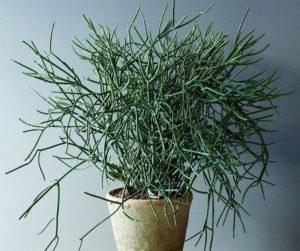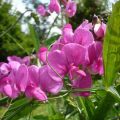Description of the best varieties of perennial matthiola, growing from seeds
Recently, perennial matthiola, or, as it is also called, night violet, has been increasingly planted in gardens, on personal plots, on balconies. Among gardeners, it is most popular for its unrivaled aroma, which spreads over long distances in the evening. To date, breeders are actively engaged in the development of new varieties. The results of the experiments can already please with a variety of terry species.
Description and features
There are two most common types of this crop - one-year (two-horned) and perennial (levkoy) mattiola. They have an extraordinary aroma of flowers that bloom only in the evening and at night, the buds are closed during the day. Plants grow in the form of a shrub or semi-shrub.
The flower of mattiola is inconspicuous and does not have high decorative features. Varieties are purchased and grown exclusively for aromatherapy, therefore it is recommended to plant them near benches, curbs.
The length of the bush varies from 20 to 80 cm. The maximum diameter of the flowers is 8 cm, the petals can be simple and double, of various shades, ranging from white to purple. They gather at the tops in inflorescences in the form of a brush. Small seeds in large quantities are formed in fruits, which are formed in place of inflorescences - flattened pods.
Growing seedlings
Growing matthiola seedlings is a crucial stage, therefore it is important to sow seeds correctly and in a timely manner and create comfortable conditions for them.

Timing
In order for the perennial to please with its flowering already with the onset of June, it is recommended to sow seeds for seedlings in March.
Soil preparation
Fertile soil is the key to high-quality seedlings that can produce strong and healthy seedlings. It is better to use a soil mixture for planting, consisting of an equal amount of turf and sand.
How to plant
To begin with, leave the seeds in a manganese solution for 30 minutes, then wash them in warm water and dry them. Next, place the planting material in previously prepared containers to a depth of 5 mm. You can also sprinkle a small amount of seeds on the surface and sprinkle lightly with potting soil.Using a spray bottle, moisten the soil and cover with a bag, which should be removed as soon as the first shoots appear.

Temperature and light conditions
Place the container in a well-lit room with a temperature regime of 10 to 12 degrees.
Dive
One week after germination, transplant each healthy specimen into a separate pot or plastic cup.
Hardening
A week before replanting seedlings in open ground, daily take seedlings out into fresh air for several hours in good weather for hardening.

Landing in open ground
For the successful cultivation of matthiola, you need to competently carry out the process of planting seedlings, which requires the correct choice of place, the presence of fertile soil, knowledge of the planting scheme.
When to plant
Matthiola can be planted outdoors from the last week of April. The maximum temperature drops that a culture can withstand is 5 degrees below zero.
Planting is recommended in the evening or when the weather is cloudy.
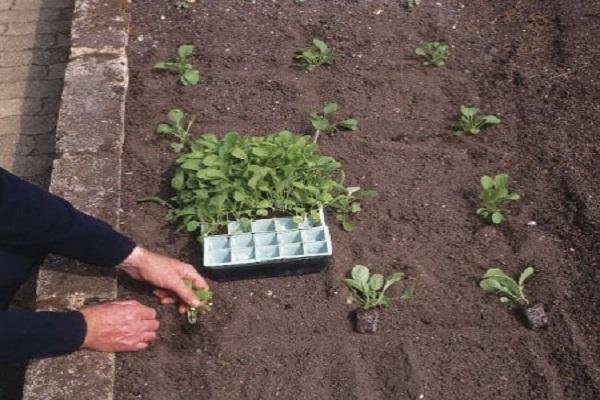
Seat selection
Mattiola prefers open and sunny places, but can grow in partial shade. If the plant is placed in the shade, then its stems will be greatly extended, and the number of inflorescences will decrease, and their aroma will also decrease.
Soil requirement
It is advisable that no plants from the Cruciferous family grow on the site before matthiola, otherwise the flower may die from infections and pests that remain in the soil. Also, the soil should be loose, fertile, with a neutral environment.
Landing scheme
Dig planting holes, keeping a distance of 20 cm between them. Their volume should correspond to the size of the plant root system.
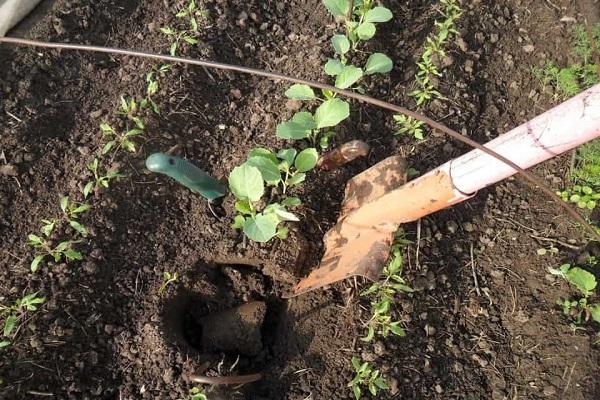
Care
Mattiola is distinguished by its unpretentiousness, provided it is planted in an area with fertile soil and sufficient lighting.
Watering
Water regularly, but in small amounts. In the evening, if you spray the plant with a spray bottle, the aroma will spread with particular intensity.
Loosening and weeding
Weed and loosen the soil as necessary so that weeds do not displace perennials and the root system does not suffer from oxygen deficiency.
Top dressing
The plant does not need a lot of feeding, even when planting. You can add a solution of mineral fertilizers in the spring, it is better not to use organic substances.
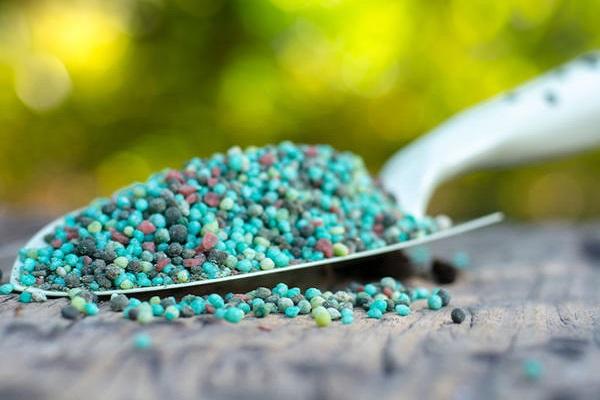
Diseases and pests
The culture is often affected by various diseases and insects, the prevention of which is proper care and successful planting. It is possible to get rid of them only with the help of special chemicals.
It is important when using chemicals to comply with the dosage indicated in the instructions for use of the product..
Blackleg
Fungal disease, due to which the leaves begin to turn yellow and curl, the stem and root collar acquire an unhealthy shade, which changes over time to black.
Cabbage keel
The leaves of the plant wither, the roots are covered with rotten growths, and soon the plant stagnates and withers.

Belyanka
The pest destroys the vegetative part of the perennial, eating up the leaves at the edges.
Cabbage butterfly
The caterpillar is able to completely destroy the shoots; it begins to eat the leaf from the inside, moving to the outside.
Cruciferous flea
Small bugs feed on the leaves of the culture, gnawing through holes in the plate.
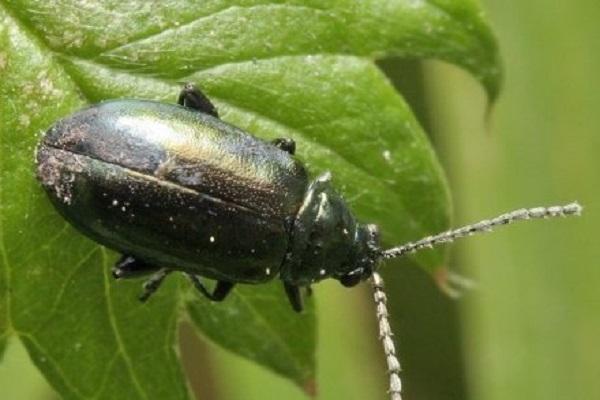
Kinds
There are several varieties of matthiola.
Autumn
It differs in that its flowering begins in early autumn, and it is recommended to plant it only in the second decade of July. Height, shape and color variety vary depending on the variety selected.
Summer
A characteristic feature is that the plant blooms in July, 2 months after the spring planting. There are perennials and annuals. Each type of variety has a unique appearance and a special aroma.

Two-horned
A plant with a thin, branched stem. It looks like a spherical bush no higher than 50 cm. Leaves are linear in gray-green hue. There are both annual and perennial representatives. Flowering occurs in June and pleases through August. Small flowers are collected in inflorescences of light pink or purple hue.
Gray-haired
An annual flower ranging from 20 to 80 cm in height. The stems are strong, lignify over time. Oval-shaped foliage with pubescence. The flowers are collected in dense inflorescences and have a variety of colors, ranging from white to dark purple. Blooms from June until the first cold weather.
Fragrant
Perennial reaches a height of 20 to 50 cm. Stems and leaves are dark green with a silvery bloom. Oblong leaves form a basal rosette. In May, racemose inflorescences of simple dark yellow flowers begin to form. The buds open after sunset.

Popular varieties
The most popular varieties of night violets, which most gardeners show off on their site.
Vintage
Terry variety, which is recommended for breeding in regions with cool climates. It can grow at least 40-50 cm in height. The leaves are dark green in color, oblong in shape. They have dense inflorescences in the form of a brush of a delicate pink hue. Flowering lasts for 30-45 days. The number of inflorescences is regularly renewed due to growth and the appearance of numerous lateral shoots.
Cinderella
An annual low-growing plant up to only 20 cm high. The stem is strong, branched. Lanceolate leaf bright green color. The variety is distinguished by the presence of large double flowers, collected in dimensional, dense, high-lying inflorescences in the form of brushes. They have a varied palette of shades.

Bouquet Katz
A tall variety capable of reaching more than 80 cm. The stem is dense, moderately branching. The bushes are decorated with dark, oblong and large leaves. It has large double inflorescences of various shades, from white to purple. As the name suggests, it is used exclusively for cutting.
Harmony
An annual undersized variety, representatives of which are only 15-20 cm tall. The leaves are small, the stem is strong, moderately branched. Terry inflorescences, located at the top of the peduncles.
Rich flavor
The variety is medium in size with bright small leaves and a strong stem. It is valued for its double flowers, collected in inflorescences and located at the top of the plant. Has a spicy aroma.
Lilac
An annual plant grows to a maximum of 50 cm. The trunk is strong, erect, branches abundantly. The leaves are large, serrated along the edges. The racemose inflorescences have lilac flowers. The flowering period is at least 2 months and begins on average 60 days after sowing.

Appleblossom
Low-growing terry variety with a height of only 20 cm. It has a persistent straight stem, on which grayish-green leaves are abundantly located. Inflorescences at the top of the peduncles of various pastel shades.
Summer evening
Annual culture up to 50 cm high. The flowering period is only 1 month, pleases in the last decade of June. Sprawling branched stem. Inflorescences in the form of lilac brushes.
Evening scent
A perennial characterized by the most pleasant aroma that can spread over large areas. The bush is small, reaches 45 cm in height. The stem is branched, erect. The racemose inflorescences consist of lilac flowers that open and exude aroma only in the evening. They are distinguished by abundant flowering.

Use in landscape design
Mattiola is considered one of the few plants that are bred not because of their external features, but because of their wonderful aroma. Decorative terry varieties are used to decorate flower beds and create various color compositions.The cut plant is able to maintain its original appearance for a week. It is customary to grow Matthiola near benches and windows of houses, as well as in other places intended for recreation. Excellent neighbors for culture - rosemary, lavender, mignonette, thyme, daisy.
Mattiola is a wonderful plant with a pleasant, memorable aroma. It is this feature that has served as such a huge popularity of culture. It is difficult to notice it, since it is not always planted in prominent places, but you cannot help but feel its smell.
